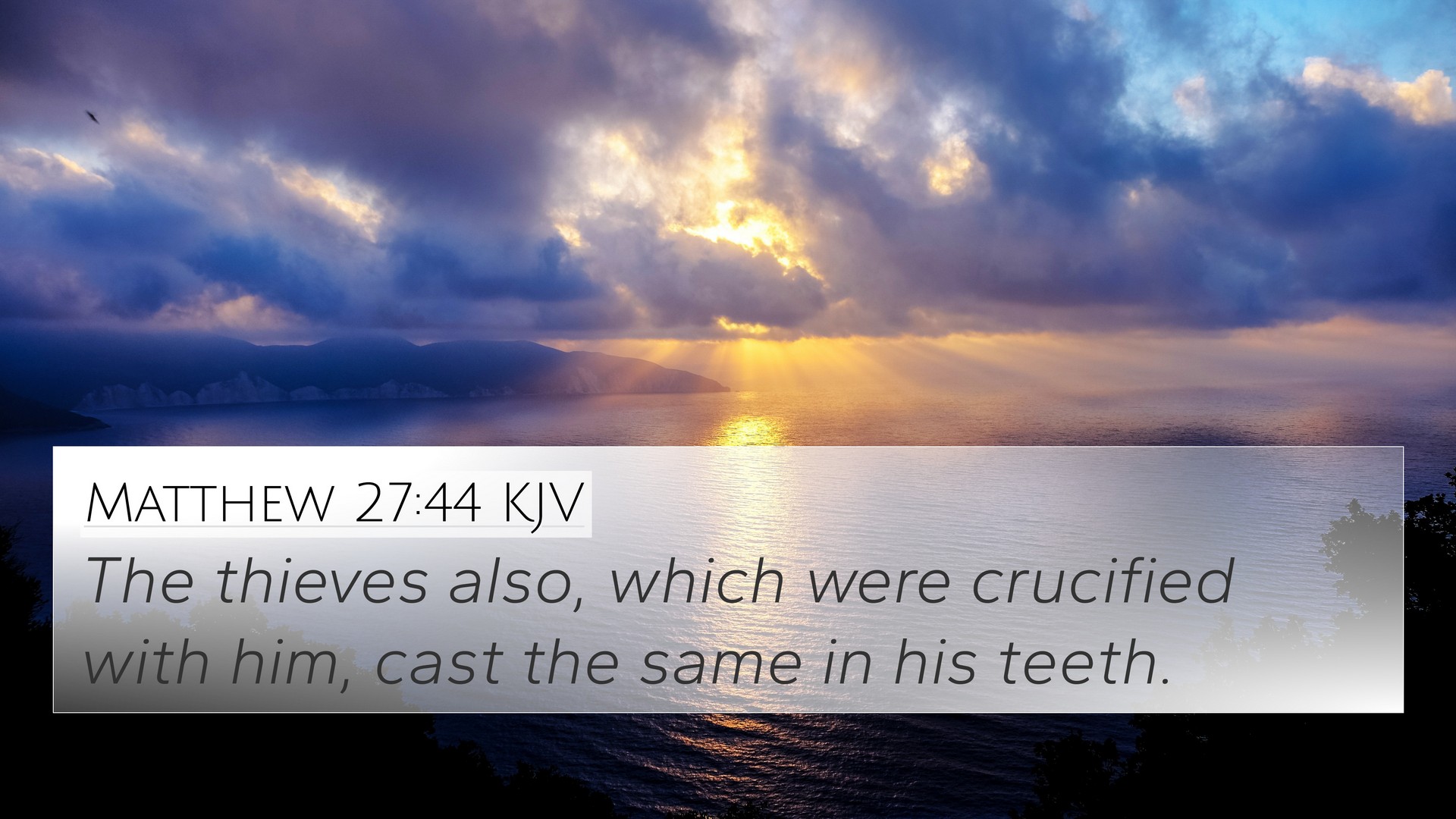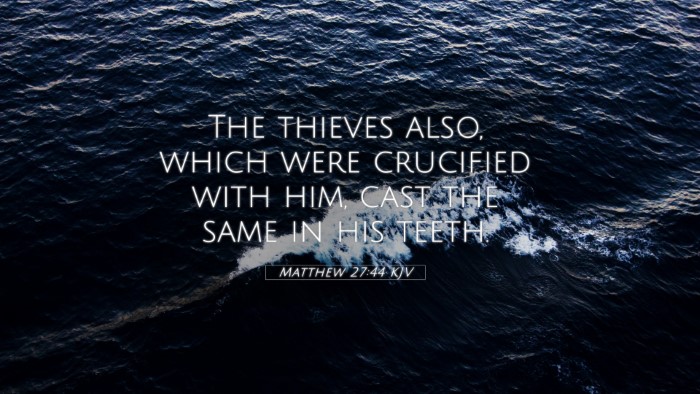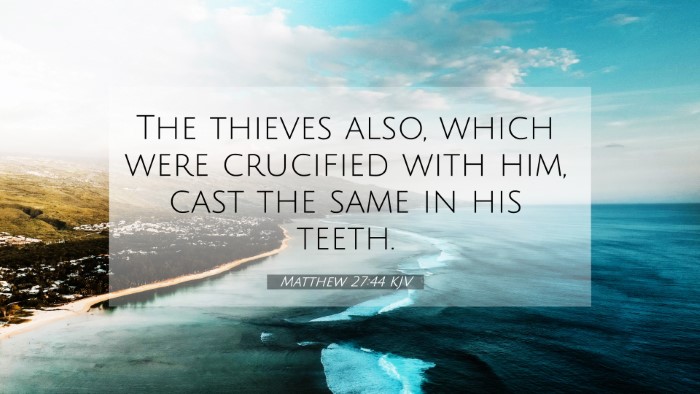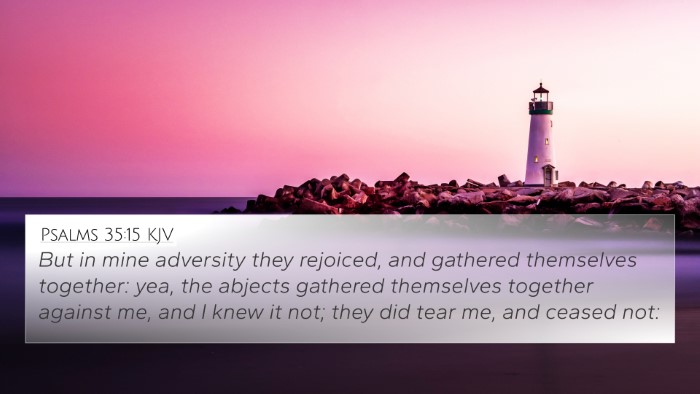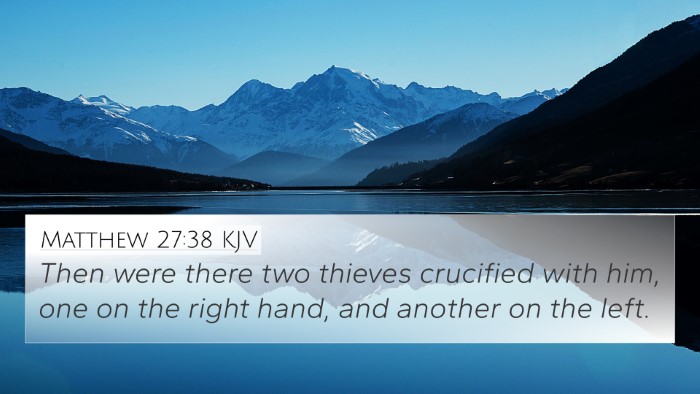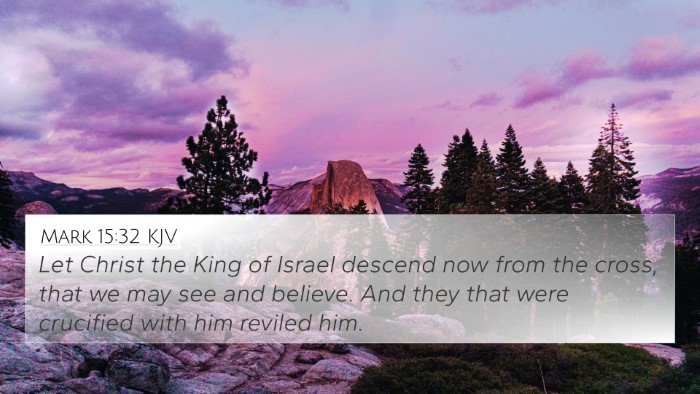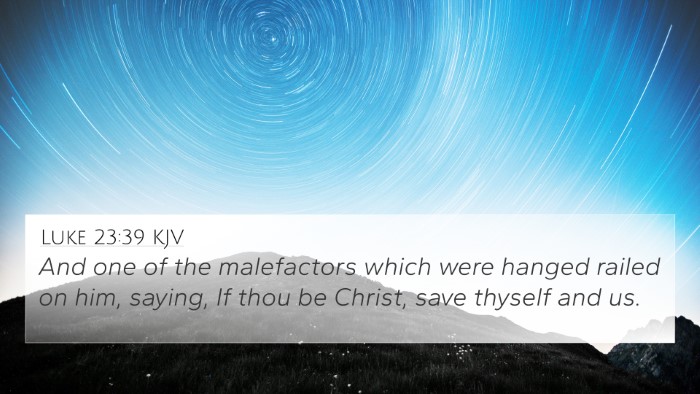Understanding Matthew 27:44
Matthew 27:44 states, "The thieves also, which were crucified with him, cast the same in his teeth." This verse occurs during the crucifixion of Jesus Christ, and it reflects a profound moment in the narrative of his Passion. In summarizing and interpreting this verse, we draw insights from several public domain commentaries.
Context and Background
The crucifixion of Jesus is a pivotal moment in the Gospels, marking the climax of his earthly ministry and the fulfillment of Old Testament prophecies. This verse illustrates the mockery and scorn that Jesus faced even at the moment of his death. The two thieves, crucified alongside Jesus, join the crowd in taunting him, emphasizing the depth of the humiliation he endured.
Key Commentaries Insights
-
Matthew Henry:
Henry emphasizes the fulfillment of prophecy in this moment. He notes that the scorners' actions connect to the Psalms, indicating that Jesus suffered the reproach predicted for the Messiah. This reflects the universal rejection of Christ, illustrating the darkness of human nature even in the face of divine sacrifice.
-
Albert Barnes:
Barnes comments on the disdain shown by the thieves, highlighting that they mocked Jesus despite their own dire circumstances. This behavior points to a deeper human ailment—shame deflection. It suggests that when faced with desperation, individuals may resort to mocking others rather than reflecting upon their own guilt or need for redemption.
-
Adam Clarke:
Clarke posits that this verse symbolizes the degree of cruelty inflicted upon Christ. He remarks on the irony of their mockery, as one of the thieves later sought redemption. This interaction demonstrates a transformative opportunity in the midst of suffering—a theme prevalent throughout the Gospels.
Bible Cross-References
To fully grasp the significance of Matthew 27:44, it is essential to explore various cross-references that provide greater context and understanding. Here are several related verses:
- Matthew 27:39 - "And they that passed by reviled him, wagging their heads." (Links the mockery of the thieves to broader scorn from the crowd.)
- Psalm 22:7-8 - "All they that see me laugh me to scorn: they shoot out the lip, they shake the head, saying, He trusted on the Lord that he would deliver him." (Foreshadows the ridicule Jesus faced.)
- Luke 23:39-43 - "And one of the malefactors which were hanged railed on him..." (Contrasts the disbelieving thief with the other who sought mercy.)
- Isaiah 53:3 - "He is despised and rejected of men; a man of sorrows, and acquainted with grief." (Affirms Jesus's suffering and rejection.)
- Galatians 6:7 - "Be not deceived; God is not mocked: for whatsoever a man soweth, that shall he also reap." (A reminder of the moral consequences linked to mockery and scorn.)
- Matthew 26:67 - "Then did they spit in his face, and buffeted him; and others smote him with the palms of their hands." (Further illustrates the violence of Jesus’s crucifixion.)
- John 19:18 - "Where they crucified him, and two others with him, on either side one, and Jesus in the midst." (Contextualizes the crucifixion scene.)
Thematic Connections
The thematic implications of Matthew 27:44 cannot be understated. It reveals the pervasive themes of suffering, rejection, and redemption found throughout Scripture. Through a comparative Bible verse analysis, we are able to identify how various passages align and dialogue with Matthew 27:44, such as the shared themes of mockery in Psalm 22 and sufferings described in Isaiah 53.
Cross-Referencing Techniques
To study the Bible effectively, one can utilize several tools for Bible cross-referencing. A Bible concordance can help locate themes and keywords, such as "mockery" and "redemption." Furthermore, utilizing a cross-reference system improves understanding by unveiling connections between different books and passages, enriching one's study. This method allows for a comprehensive view of how Jesus’s sacrifices were prefigured in the Old Testament and fulfilled in the New Testament narrative.
Applying the Insights
For those seeking to deepen their understanding of Matthew 27:44, it is pivotal to reflect on the nature of Jesus's suffering, the reasons behind human scorn, and the message of redemption offered to all, even in dire circumstances. Questions to consider include:
- What verses are related to the theme of mocking and redemption?
- How do the actions of the thieves reflect broader human behavior in rejecting Christ?
- What personal insights can be drawn from the responses of the characters surrounding the crucifixion?
Conclusion
Matthew 27:44 serves not only as a narrative point within the crucifixion account but also as a profound teaching moment regarding human nature, the perfection of Christ's sacrifice, and ultimately the hope of redemption. By engaging in inter-Biblical dialogue through scriptural cross-referencing, readers can draw connections that enrich their understanding and appreciation of God’s overarching narrative of salvation.
